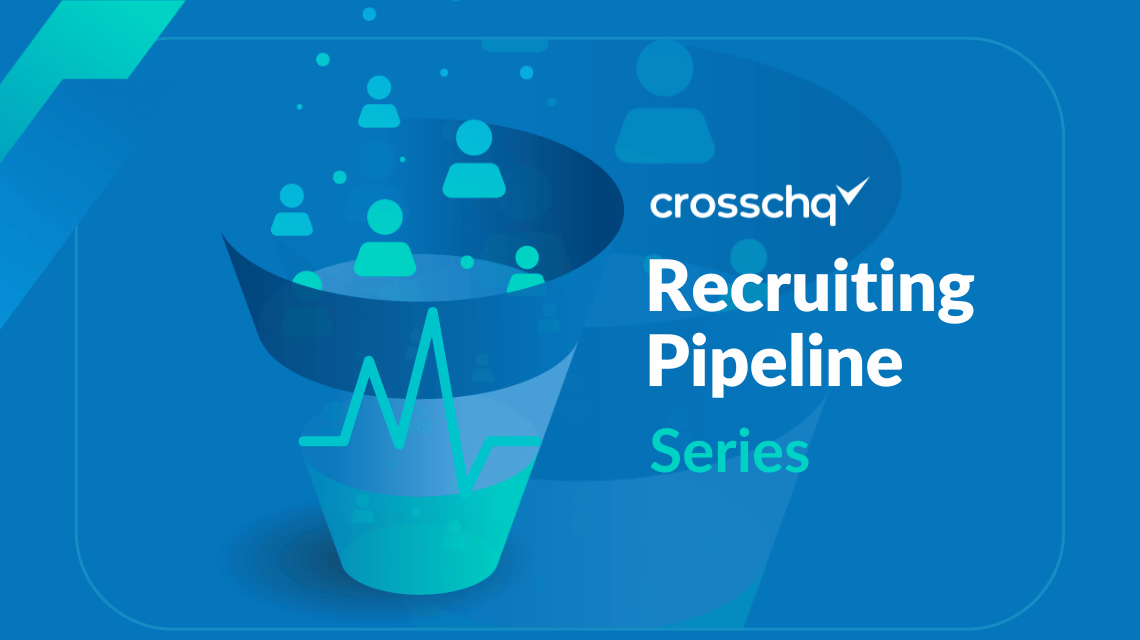

Crosschq Blog
Recruiting Effectiveness Dashboard

Team leaders and hiring managers can execute their hiring needs when they have the help of powerful data-driven analytics. Leveraging data can tell you how effectively you attract, sign, and retain top talent.
The challenge that hiring teams face is making sense of the plethora of available data points cohesively and strategically. Tracking individual data points or metrics won’t give you the strategic insights you need to make better decisions. That’s where a recruitment effectiveness dashboard comes in.
A recruiting effectiveness dashboard will give you a better understanding of your hiring processes, allowing you to gain insight into where you excel and where you need some improvement.
What Is Recruiting Effectiveness
Recruiting effectiveness refers to how well you can source, screen, interview, land, and retain quality hires. When you have an optimized recruiting effectiveness strategy, you’ll have a bird’s-eye-view of every step of the hiring process. Better recruiting effectiveness will generally lead to more optimized hiring outputs (cost, time, etc.), but it also refers to qualitative metrics, like quality of hire, culture fit, retention, and new-hire performance.
How to Measure Recruiting Effectiveness
You can leverage several key performance indicators to get a sense of your recruiting effectiveness. Cutting-edge recruiting effectiveness dashboards, like Crosschq, will simplify the measuring process by automating, visualizing, and generating KPI reports for you. Crosschq’s metric-tracking capabilities will give you visibility into the performance of every department, hiring team, hiring cohort, and business unit.
Common metrics that will give you a pulse on your recruiting effectiveness include:
- Time to hire
- Cost per hire
- Quality of hire
- Candidate experience
- Offer acceptance rate
- Application completion rate
- First-year attrition rate
Why Use a Recruiting Effectiveness Dashboard
While some solutions give you insights into your hiring data points, it will be easier to parse through those insights with a dashboard. Recruiting effectiveness dashboards will give you a bird’s-eye view of your entire hiring process, providing you with all the tools you need to get a pulse on every funnel of the hiring process.
Here are a few benefits of a recruiting effectiveness dashboard:
- Full visibility into the health, hygiene, and status of every active candidate and open role across your company
- Ability to identify inefficiencies in your interview process, onboarding, and other hiring process
- Ability to identify effective recruiting strategies
- Easy access to reports that you can share across departments and with shareholders
- Reports with real-time insights into your overall hiring efforts
- Easy to navigate dashboard that simplifies the complex process of gathering, tracking, and evaluating candidates and new hires
What Metrics Should You Include in Your Recruiting Effectiveness Dashboard
Here are a few metrics you should include in your recruiting effectiveness dashboard.
- Quality of hire: Quality of hire is the most important hiring metric you should be tracking. Quality of hire doesn’t only give you a sense of new-hire performance and productivity; it can help you save costs when analyzed alongside your interview program and sourcing spend. Learn more about why quality of hire is the holy grail of recruiting in our Crosschq “Q” Report.
- Time-to-hire: Advanced recruiting effectiveness dashboards will give you insights into your overall time-to-hire, as well as time-to-hire for each individual recruiter. Your dashboard will tell you which step in the hiring process–interview, assessment, application review process, etc.–is taking the longest so you can start making the appropriate adjustments.
- Application completion rate: If candidates are ditching the application at higher rates, it could be a sign that your application process is too cumbersome, confusing, or difficult to get through. You want to strike the right balance between ease of use and rigor (CVs, pre-hire assessments, etc.); your application completion rate is a good start to finding pain points for applicants.
- First-year attrition rate: First-year attrition rate is an essential metric for tracking quality of hire, culture fit, your onboarding process, and candidate experience. By having visibility into various departments and hiring teams, you’ll have the right insights to see which departments retain their new hires and which don’t.
- Offer acceptance rate: This is another important metric that can tell you several things about your hiring process, interview process, quality of hire, culture fit, and more. If candidates are declining job offers at high rates, it may be a sign that you need to revamp your interview, assessment, and other pre-hire processes. If applicants aren’t a good fit based on their background or are having poor experiences in the pre-hire stages, they will be less likely to accept a job offer.
Getting Started With a Recruiting Effectiveness Dashboard
With Crosschq’s TalentWall dashboard, you can gain insight into the most important hiring metrics, optimize your talent resources, leverage shareable reports, and identify efficiencies across every hiring funnel.
Whether you’re assessing individual departments/candidates or seeking visibility into your overall hiring ecosystem, TalentWall has the tools you need to manage every aspect of your recruiting pipeline.
Sign up for a demo to learn more about how you can take greater control of your hiring needs with Crosschq today.
Take the Guesswork
Out of Hiring
Schedule a demo now



%20-200x43.png)





